Byrthe of Mankynde
| Title | Byrthe of Mankynde |
|---|---|
| Contributor(s) |
Rösslin, Eucharius, -1526. (author) Jonas, Richard (translator) Raynalde, Thomas, active 1540-1551.(publisher) |
| Year | 1526, 1540, 1545 |
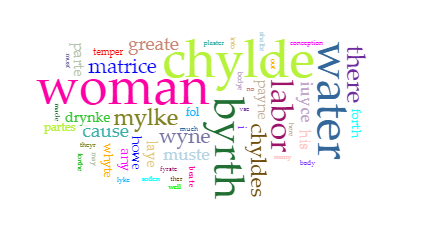
This is a visualisation taken from Voyant Tools which shows the most common words and concerns of this text and how it pertains to the female body. We can see that the woman is central to the discussion and of childbirth. We can also see some of the language used to discuss the body, such as ‘matrice’. Language of birth also includes ‘labor’ and ‘payne’.
Our corpus opens with the 1540 English language translation of an earlier German text which was originally printed in 1513 by Eucharius Rösslin (15..-15..) under the name Der Swangen Frauwen und Hebammen Rosengarten. After Rösslin’s death, his son altered and reprinted the text in 1526 into Latin and renamed it De Partu Hominis. In English it was printed under the title The byrth of mankynde : otherwyse named the womans booke … whose conte[n]tes ye maye rede in the table of the booke and most playnly in the prologue. The translator was Richard Jonas (dates unknown) and the printer of our source, Thomas Raynalde (1540–1551), went on to write his own gynaecological text under the same name, with much of the same content, in 1545.
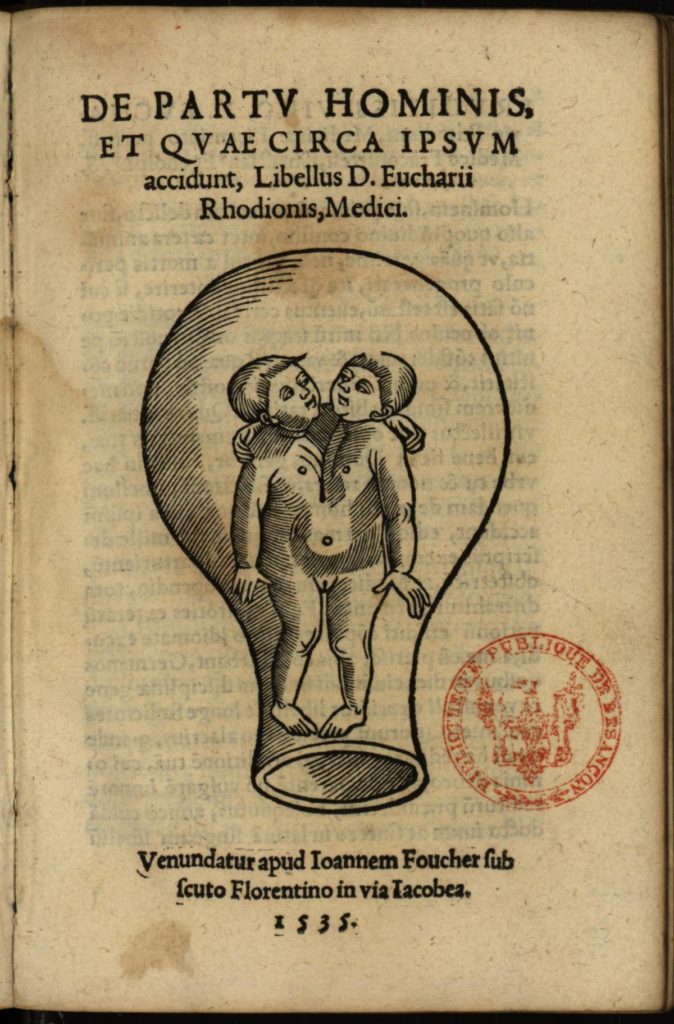
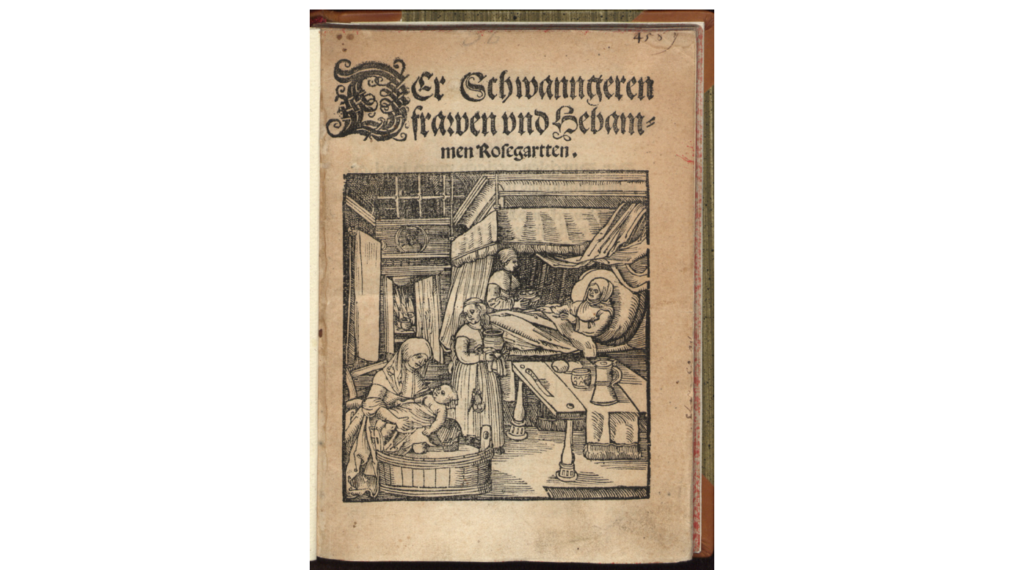
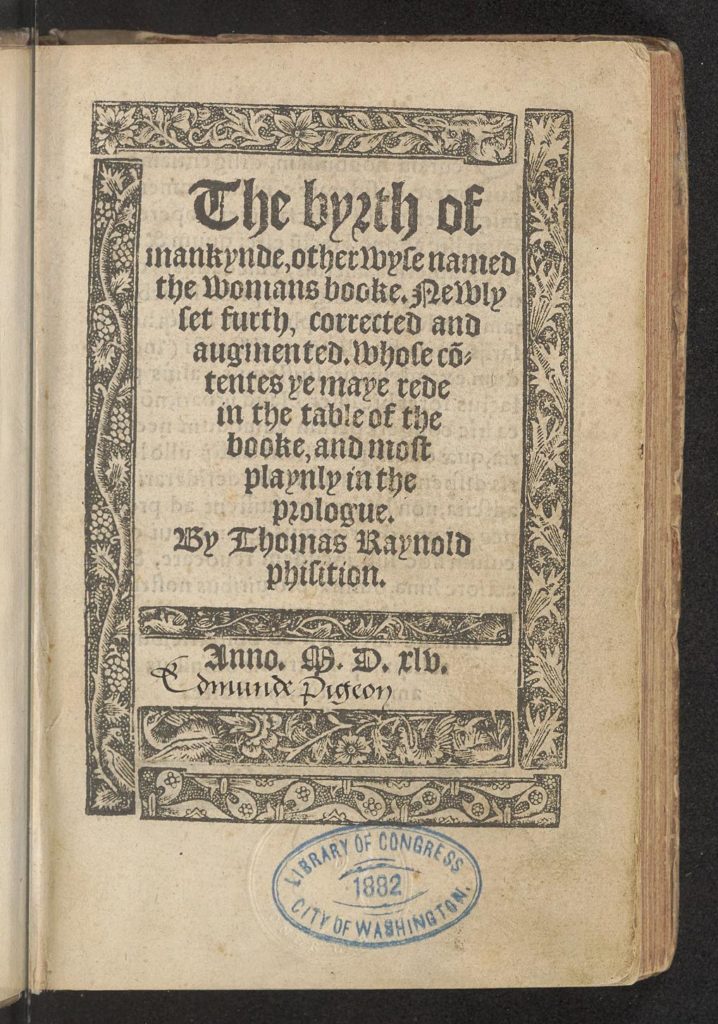

Bibliothèque municipale d’étude et de conservation, Besançon
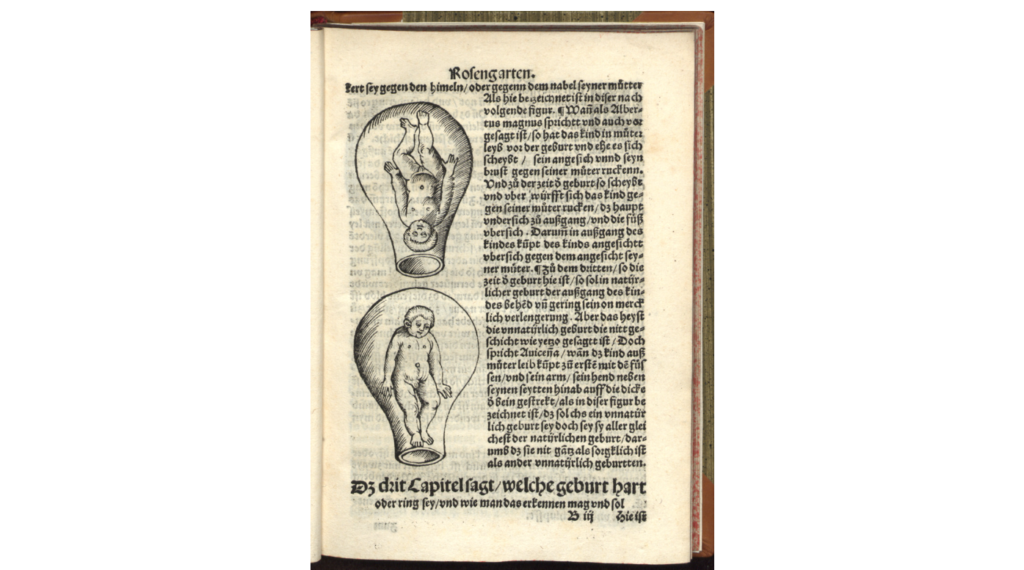
Rosengarten (1528), Göttinger Digitalisierungszentrum
The impact of Rösslin’s work was evidently profound as it was reprinted multiple times in all of its versions and was quickly translated into French barely a decade after its 1526 version. The version we have chosen to study is Jonas’s English translation.
The guidance of its diagrams of the foetus in-utero allowed the medical and lay community who may have had access to these works to visualise the female body in pregnancy. The question of who this community is remains debated in academia, as defining literacy is a recognised challenge in book history studies. Jonas explicitly mentions women as his intended audience, not just for images but also the text.
Women were his reason for translating the work into English:
[…] by enioyng of this lytle boke in theyr maternall langage / myght al∣so ensue vnto all womē in this noble realme of England / if it be set forth in the Englyshe speche / as concernynge this / I haue done my symple endeuoure for the loue of all wo∣manhode […]
(Roselin, 1526/1540, p. vii)
Consult the 1540 edition from Internet Archive
Source
We refer to one main source for The Byrth of Mankynde, the 1540 edition which is hosted by the University of Michigan; this also served as the .txt data file source. As per their established citation standards, Rösslin will be referred to as Roselin going forward. Unfortunately, when working with this transcribed form which maintains only the text, we lose the images of internal female structure and children in the womb as seen in digitised editions.
To maintain the link with the physical book and Roselin’s intent to depict the physicality of the female body, we also refer occasionally to other editions. The first is from the Göttingen State and University Library which depicts the German Rosengarten published in 1528, the second is from the New York Academy of Medicine which depicts the 1540 Jonas edition (also the source for the Internet Archive file above), and the third is the Library of Congress 1545 Raynalde edition. The Latin translation entitled De Partu hominis from 1535 was available for us to consult in person at the municipal library in Besançon.



